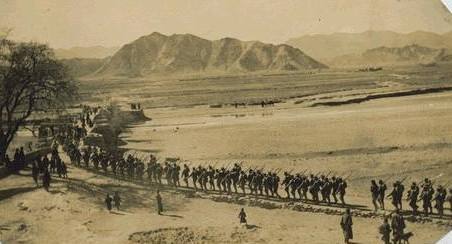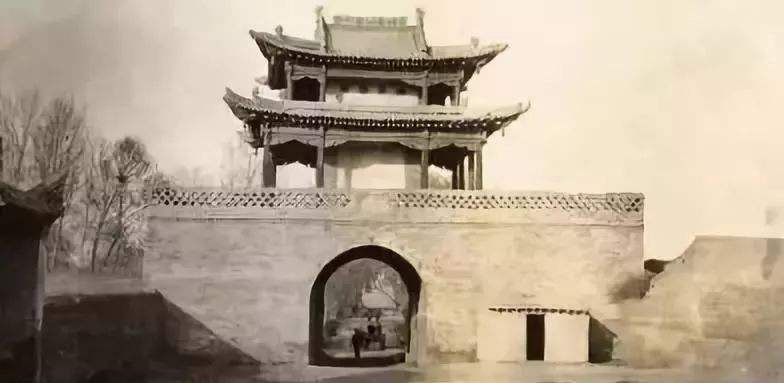Provincial System
7 min readPrefecture and counties consistent with the inland system were first set up in Xinjiang in 327 AD(the 21d year of Xianhe reign of Eastern Jin). In that year, the Former Liang regime set up Gaochang Prefecture in today’s Turpan region, administering counties such as Gaochang and Tiandi, under which were various townships and villages. The earliest province in Xinjiang appeared in the Yuan Dynasty, when the Western Regions was regarded as part of the Beshbalik Ministerial Province and governed in the same way as what applied in the inland. In the northwest, the Ming Dynasty only had its administration reaching Hami region as its national strength was limited.
After the Qing government unified Xinjiang in 1759,a military office system was introduced there. The consideration behind that decision included the location of Xinjiang in the western frontier and the multiple ethnic composition as well as other historical conditions. Only in Zhendi Dao(today’s Muri to Jinghe) were there prefectures and counties, which were put under the administration of Gansu Province. In 1820, in his articleComments on Provincial Setup in the Western Regions, Gong Zizhen proposed, for the first time, the restoration to provincial establishment in Xin jiang so as to achieve the broad united rule across the country and fend off the increasingly serious border menace in the northwest. In June 1877, Zuo Zongtang, Minister Overseeing Xinjiang Military Affairs was charged to plan for the entire rehabilitation work in Xinjiang. Consistent with historical trends, he raised the issue of resuming provincial establishment in Xinjiang.

According to Minister Zuo, it made good sense to establish province in Xin jiang in two aspects. First, it could solidify border defence in the northwest. Since ancient times, the northwest of China often had more border crises than the southeast. To set up province in Xin jiang and incorporate that region into the unified administrative system of the inland had significance that could not be underestimated for better border defence in the northwest and unity of the country. Second, it could facilitate early social and economic recovery and growth in the border area. Only after province and counties were set up thereand run with care could there be hope for recovery. In early 1878, Zuo Zongtang put forward the proposal of establishing province in Xinjiang again. However, by that time Ili was not recovered yet, and the situation in the northwestern frontier was very grave, so the proposal was shelved again. In October 1882, Zuo Zongtang, who was Viceroy of Liangjiang at the time, presented a memorial to the emperor, asking yet again for provincialestablishment in Xin jiang. He strongly advised the Qing government to seize the opportunity and make the earliest possible decision, as Xinjiang had been just recovered and the western expedition troops were still there. In addition, the newly recovered Xin jiang and its people were in desperate need of reconstruction and tranquillity, so the establishment of province there served the will of the people and contributed to social stability and economic recovery. Prompted by Zuo Zongtang and other people, the Qing government finally decided to set up province and counties in Xinjiang.
In December 1882, the Qing government be gan its preparations for establishing dao, ting, zhou and xian (counties) in Xinjiang and sent nearby officials to assume the newly created posts. Boundaries between and among those divisions were delimitated; posts and stations sorted out; government offices, altars, temples, warehouses and prisons renovated and built; supporting division officers and civil staff such as zhoupan, xiancheng, xun jian and fenfang appointed; and official seals given out.A massive border institutional reform was unfolded in the north and south of the Tianshan Mountains simultaneously. By the first half of 1883, the grassroots organizational structure of dao, ting, zhou and xian(counties) was preliminarily in shape. In June, Liu Jintang advised the emperor to cancel the previous local official posts in Xin jiang such as tutung, councillor, administration and head ministers. On November 17,1884, the Qing government officially approved provincial establishment in Xin jiang, which was announced publicly the next day. Liu Jintang and Wei Guangtao were appointed as the first Xunfu(equivalent to Provincial Governor) and Buzhengshi(deputy provincial governor, in charge of civil and financial affairs) of Xinjiang respectively, and the capital was Dihua(today’s Urumqi). At last Xinjiang Province was set up again.
The provincial establishment in Xinjiang was a major reform by the Qing government on the border governance regime in the latter half of the 191h century and had profound significance and long-term bearing. First of all, defining Xinjiang as a province no different from other inland provinces brought an end to the separate ruling methods between Xin jiang and the inland, which was highly beneficial for the unity of the frontier areas and their social and economic progress. Second, after Xinjiang Province was set up, the entire northwest was under the control of Shaangan Viceroy, which linked Xinjiang and other provinces in the northwest ever closer and more completely. The military reform and socio-economic progress after the provincial establishment enhanced the defence capabilities of Xinjiang, which had tremendous importance to the maintenance of China’s territorial integrity, particularly in the northwestern frontiers, and the resistance to foreign powers’ political and economic expansion in Xinjiang. Third, Xin jiang’s regained provincial status replaced the old military office and beg system with a more progressive system of province-county structure, which fundamentally reformed the Qing central government’s governance over Xin jiang. This was significant to social stability, administration reform and coordination of inter-ethnic relations in Xin jiang. In addition, Xinjiang was the firstborder area acquiring the province status, thus setting up an example for the reform of the Chinese border governance regime towards the end of the Qing Dynasty. Taiwan, Liaoning, Jilin and Heilongjiang followed suit one after another. Therefore, the provincial establishment in Xin jiang provided an important impetus to the restructuring of the border governance in late-Qing Dynasty.

The first Governor of Xin jiang, Liu Jintang was succeeded by Wei Guangtao, Rao Yingqi, Pan Xiaosu and Yuan Dahua. During Rao Yingqi’s tenure, Xinjiang was in its 11th year asa province. The previous local establishment was no longer suitable for the new developments in Xin jiang, as “the population grew, the border kept peaceful, and the harvest was good year by year, which encouraged many Han and Hui families from the inland to move into Xinjiang as farmers, artisans or merchants, leading to opening of new lands and further rise of the population”④. Therefore,a series of changes were initiated in local establishments, such as upgrading the old ones and adding new ones. By the 28th year of Guangxu reign, there were altogether “4 dao,6 fu,11 ting,2 zhilizhou(directly controlled zhou),1 zhou,21 xian(counties) and 21 fanxian(subcounties)”across the Province of Xin jiang. The following were the details.
Zhendi Dao: built in September of the 38th year of Qianlong reign and controlling 1 fu,4 ting,7 xian and 1 fenxian from its seat, Dihua. The one fu was Dihua Fu, established in the 12th year of Guangxu reign. The 4ting were Hami Zhiliting (directly controlled ting), built in the 24th year of Qianlong reign; Turpan Zhiliting, built in the 44th year of Qianlong reign; Zhenxi Zhiliting, built in March of the 5th year of Xianfeng reign; Kulkarawusu Zhiliting, built in the 12th year of Guangxu reign. The 7 xian were Dihua(the 12th year of Guangxu reign), Changji(the 38th year of Qianlong reign), Suilai(the 420d year of Qianlong reign), Fukang(the 41St year of Qianlong reign), Fuyuan(the 28th year of Guangxu reign), Qitai(the 41t year of Qianlong reign), and Shanshan (the 28th year of Guangxu reign). The one fenxian was Hutubi, built in the 291h year of Guangxu reign.
Yita Dao: built in January of the 141h year of Guangxu reign and controlling 1 fu,2 ting,fenfangting(defence-sharing ting) and 2 xian from its seat, Ningyuan City. The one fu was lli, built in the 13th year of Guangxu reign. The 2 ting were Jinghe Zhiliting (the 13th year of Guangxu reign) and Tacheng Zhiliting (the 16th year of Guangxu reign). The one fenfangting was Korgas, set up in the 12th year of Guangxu reign. The 2 xian were Suiding (the 2oth year of Guangxu reign) and Ningyuan (the 13th year of Guangxu reign).
Aksu Dao: built in July of the 8th year of Guangxu reign and controlling 2 fu,1 ting,1zhilizhou,6xian and 1 fenxian from Wensu. The 2 fu were Wensu (the 28th year of Guangxureign) and Yanqi(the 24th year of Guangxu reign). The 6 xian were Wensu(the 28th year of Guangxu reign), Baicheng(the oth year of Guangxu reign), Xayar(the 28th year of Guangxu reign), Xinping(the 241h year of Guangxu reign), Ruoqiang (the 28th year of Guangxu reign) and Luntai (the 28th) year of Guangxu reign). The one fenxian was Keping, also built in the 28th year of Guangxu reign.
Kashgar Dao: built in July of the 8th year of Guangxu reign and controlling 2 fu,1 ting,1fenfangting,1 zhou,1 zhilizhou and 6 xian from Shufu County. The 2 fu were Sulek and Shache, both set up in the 28th year of Guangxu reign. The one ting was Yengisar Zhiliting, built in the 91h year of Guangxu reign. The one fenfangting was Puli, set up in the 28th year of Guangxu reign. The one zhou was Bachu, built in the 28th year of Guangxu reign; and the one zhilizhou Khotan, set up in the th year of Guangxu reign. The 6 xian included Yecheng(the 9th year of Guangxu reign), Pishan (the 28th year of Guangxu reign), Yutian (the 9th year of Guangxu reign) and Lope.








